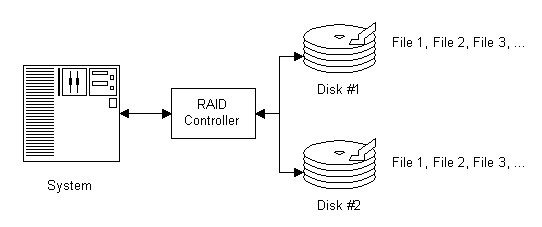[ The PC Guide | Systems and Components Reference Guide | Hard Disk Drives | Hard Disk Performance, Quality and Reliability | Redundant Arrays of Inexpensive Disks (RAID) | RAID Concepts and Issues | General RAID Concepts ]
Mirroring
Mirroring is one of the two data redundancy techniques used in RAID (the other being parity). In a RAID system using mirroring, all data in the system is written simultaneously to two hard disks instead of one; thus the "mirror" concept. The principle behind mirroring is that this 100% data redundancy provides full protection against the failure of either of the disks containing the duplicated data. Mirroring setups always require an even number of drives for obvious reasons.
The chief advantage of mirroring is that it provides not only complete redundancy of data, but also reasonably fast recovery from a disk failure. Since all the data is on the second drive, it is ready to use if the first one fails. Mirroring also improves some forms of read performance (though it actually hurts write performance.) The chief disadvantage of RAID 1 is expense: that data duplication means half the space in the RAID is "wasted" so you must buy twice the capacity that you want to end up with in the array. Performance is also not as good as some RAID levels.
|
Block diagram of a RAID mirroring configuration. The
RAID controller |
Mirroring is used in RAID 1, as well as multiple-level RAID involving RAID 1 (RAID 01 or RAID 10). It is related in concept to duplexing. Very high-end mirroring solutions even include such fancy technologies as remote mirroring, where data is configured in a RAID 1 array with the pairs split between physical locations to protect against physical disaster! You won't typically find support for anything that fancy in a PC RAID card. :^)
![]() Next: Duplexing
Next: Duplexing
| The PC Guide
(http://www.PCGuide.com) Site Version: 2.2.0 - Version Date: April 17, 2001 © Copyright 1997-2004 Charles M. Kozierok. All Rights Reserved. |
Not responsible for any loss resulting from the use of this site. Please read the Site Guide before using this material. |
